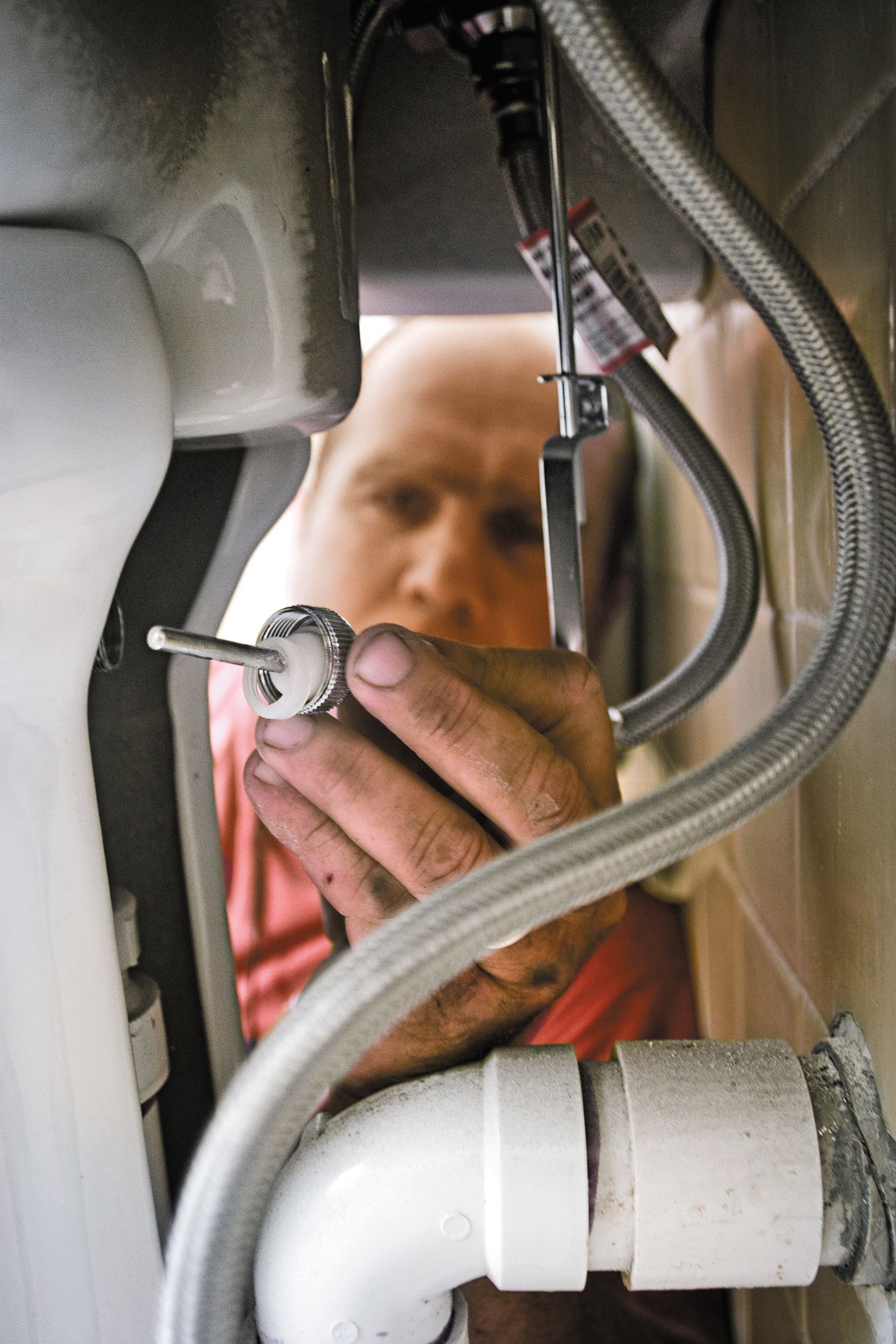A surprising number of common household repairs are within reach of the average homeowner—and rolling up your sleeves pays off. Fixing a washing machine could cost you less than $30 in parts and an hour’s time, while an appliance service call could run $200 or more—just for the repairman to show up. Here are more than 20 common household repairs you could be making yourself.
Easy Bathroom Fixes
While certain plumbing tasks are best left to professionals, some common issues can be addressed by the average homeowner. For most plumbing repairs, you’ll want to shut off your water first, so you’ll need to locate your home’s water shutoff valve.
1. Uneven Shower Stream
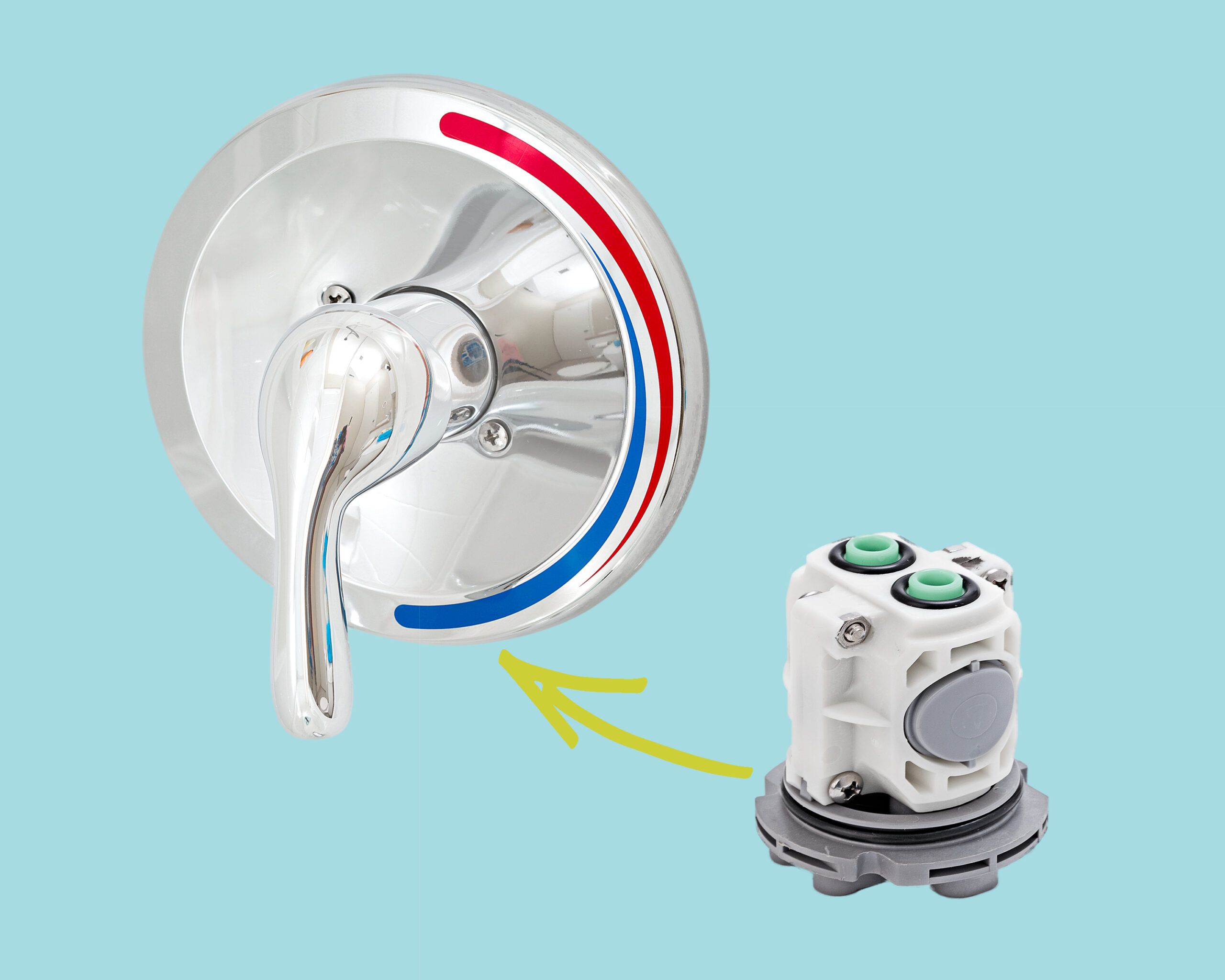
Behind a shower’s handle is a valve responsible for correctly mixing hot and cold water and keeping the pressure consistent. If your shower struggles with either of those tasks, install a replacement pressure balance cartridge for about $30 in three steps:
- Shut off the water to the shower.
- Remove the screws holding the handle and trim plate, then the screws holding the valve cap.
- Use pliers to pull out the old cartridge; slide the new one in and rebuild the handle.
An uneven shower stream can also result from calcium buildup on the shower head. If this is the case, tie a freezer bag filled with distilled white vinegar around your showerhead, let it soak for and hour, and then run the shower.
2. Leaky Faucet
A faucet drip can waste more than 8 gallons of water each day. If the fixture has two handles and is less than 20 years old, you can often buy a replacement cartridge—a brass or plastic valve that contains all the parts that control water flow.
To install the new cartridge, first shut off the water underneath the sink. Remove the leaky handle after loosening the fastener, then swap in the new part with a pair of pliers.
3. Puddling Toilet
Pooling on the floor around the base could be condensation, but if you don’t see water beading on the outside of the tank, chances are the wax ring that seals the fixture to the waste pipe has failed. Here’s how to fix it:
- Disconnect the water supply line, and drain the tank and bowl.
- Use a wrench to remove the two nuts holding the toilet to the floor, then lift it up and out of the way.
- Pry the wax ring up with a putty knife and replace it with a flexible polyurethane foam ring that is water- and chemical-resistant. $15; Amazon
4. Toilet Bowl Scratches
Using on a drain snake on a clogged toilet is effective, but the metal cable can leave scuffs inside the bowl. To fix them, disconnect the toilet’s water supply line and drain the tank and bowl. Then scrub the marks with Bar Keepers Friend and a kitchen scouring pad.
Easy Kitchen Fixes
Before you replace a malfunctioning kitchen appliance, attempt to repair it yourself, and you could save considerably.
5. Sluggish Vent Hood
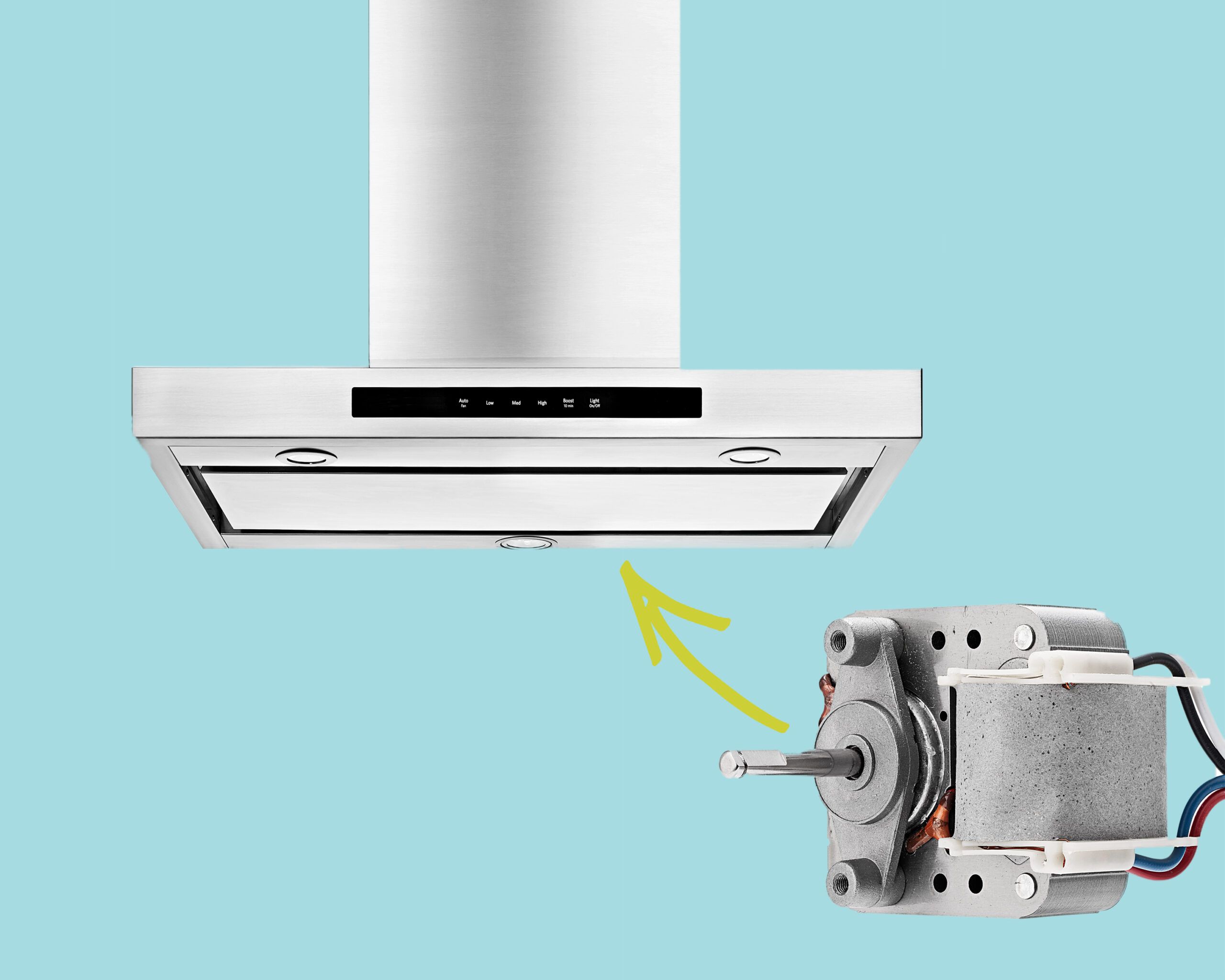
If you have poor hood suction, first try replacing the filters and cleaning the ducts. If that doesn’t do the trick, you may need to replace the motor. To do so:
- Shut off the power to the hood and remove any filters.
- Pull out the fan blade and find the motor’s wiring harness.
- Unclip the harness, then unscrew the motor from its bracket.
- Attach the replacement motor ($70 – $100), then reconnect the harness.
- Reinstall the fan blade and replace the filters.
6. Cracked Glass Cooktop
While a grimy cooktop is an eyesore, a cracked one is an electrical hazard. If the burners work, replacing the glass should take less than an hour.
- Pull the range away from the wall and unplug it, then unscrew any fasteners securing the top.
- Prop up the range and unplug the wires connected to the burners.
- Place the damaged cooktop, with burners glass side down, on a towel next to the new one.
- Transfer the burners over by plugging the wiring into the new cooktop.
- Reinstall the cooktop.
Expect to pay at least $200 for a new glass cooktop, according to our research at big-box hardware stores.
7. Drippy Dishwasher
The thick rubber gasket along the edge of the dishwasher tub can become brittle over time, leaking water and ruining wood floors. Here’s how to fix it:
- Examine the gasket. If it’s not damaged, gently pull it out and reseat it into the tub, then run the dishwasher.
- If it still leaks, get a replacement gasket, soak it in warm water until it’s pliable, and install it the same way.
- Clamp the door closed for a few hours to let the gasket conform to the door.
8. Unreliable Gas Oven
When fluctuating temperatures ruin dinner, a faulty igniter is often to blame. This carbide element sits alongside the tubular burners and glows red-hot, starting the flames.
To check your igniter, first remove the oven floor, then turn the oven on. If the igniter doesn’t change color or if it takes longer than 90 seconds for flames to light, replace it.
To replace your oven igniter:
- Shut off the oven’s electricity and gas lines.
- Remove the oven floor to expose the igniter.
- Disconnect the igniter’s wiring, then remove the fasteners holding it in place.
- Attach the new igniter ($40 – $60; RepairClinic) in the reverse order, orienting the carbide tip in the same direction.
9. Broken Ice Maker
When a fridge’s ice maker stops working, it’s usually because the inlet valve is broken. The most difficult part of this repair is moving the refrigerator far enough from the wall that you can gain access to the back.
First, shut off the refrigerator’s water supply, usually from the sink’s cold-water valve. Unplug the appliance and remove the rear panel, then disconnect the water supply line to the refrigerator.
Take the valve out by unscrewing its fasteners. Unplug the electrical connections from the old valve and plug them into the same spots on the new valve ($60 – $80; RepairClinic).
Replace the water lines, then reattach the valve to the refrigerator body, reconnect the supply line, and put the panel back. Wait until the unit has made a batch of ice before you push the refrigerator back into place—it will reduce wear and tear on your kitchen floor.
10. Leaky Sink Plug
The sink strainer body is regularly exposed to hot water and chemical cleaners, which can erode the gaskets, leading to a leak.
Rub the underside of the strainer body with a tissue—if it picks up any water, replace the part with a new sink strainer kit. Press a length of plumber’s putty to the new strainer body; tighten the gasket and nut from below until the excess putty squeezes out.
Easy Laundry Room Fixes
Before spending $200 to have a professional examine your malfunctioning washing machine, try to address minor issues yourself.
11. Leaking Top-Loader
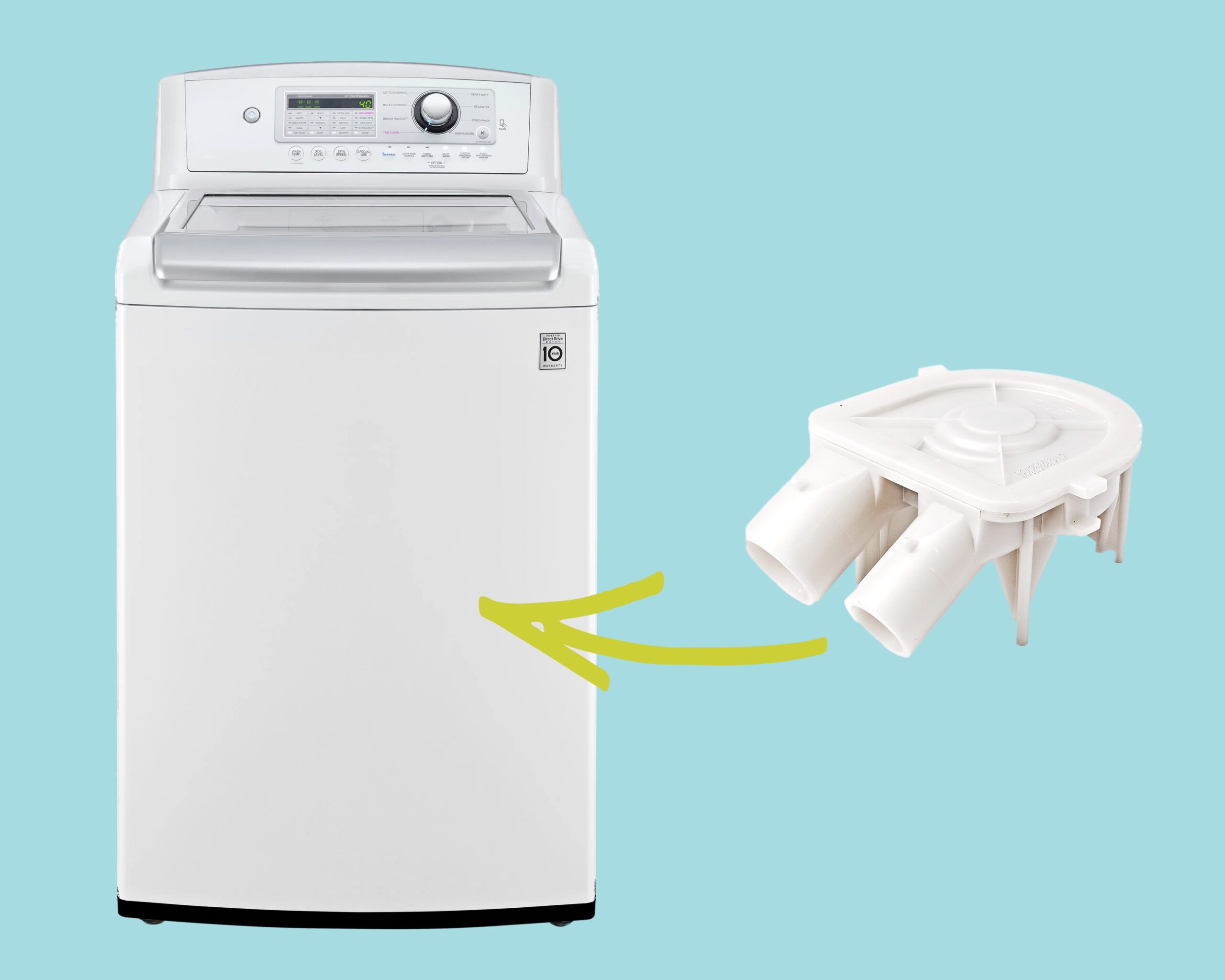
First, check the supply hoses for leaks. If the supply hoses are sound, then a top-loading washing machine that leaks might have a failed pump. Here’s how to fix it.
- Undo the screws that hold down the control panel and any wires, then flip up the panel, exposing the clips that hold the three-sided metal cabinet in place.
- Remove the clips and slide the cabinet off–the pump is on the bottom with two hoses attached.
- Detach the hoses (have a rag handy to catch any drips), wiggle the pump off the motor shaft, then band-clamp the hoses to the replacement pump ($50–150; RepairClinic) before reattaching everything in the same orientation.
12. Slow Dryer
Every dryer needs proper airflow to finish a load of clothing. For a slow-to-dry machine that has plenty of air circulation and a clean exhaust duct, the problem might be the blower wheel. Swapping in a new one ($30 – $100; RepairClinic) is easy:
- Remove the front panel and housing cover, taking care to unhook the door switch’s wires. Behind that is the blower wheel.
- Remove the wheel from the motor shaft with snap ring pliers, a $15 tool that pries open the wheel’s metal retainer ring.
- The area around the old wheel might be caked with lint. Clean it with a damp cloth or a wet/dry vacuum.
- Slide the new wheel in place and test that it spins by hand, then reassemble the dryer front.
13. Stalled Vacuum Brush
Even a vacuum that can suck up bowling balls is useless if the rotating carpet brush isn’t pulling debris from the floor. If the motor runs but the brush isn’t spinning, you need a new belt ($3; RepairClinic).
- Flip the vacuum over and remove the screws holding the belt cover in place.
- Remove the brush and slide the worn belt off the spindle.
- Attach the new belt.
- Thread the brush through the loosely fitting belt, and stretch the rubber far enough that the brush seats in its compartment.
- Spin the brush to test that it rotates freely, then reattach the cover.
Easy Home Interior Fixes
Major electrical repairs are best left to professionals, though some minor fixes can be performed by anoyone.
14. Broken Ceiling Fan Switch
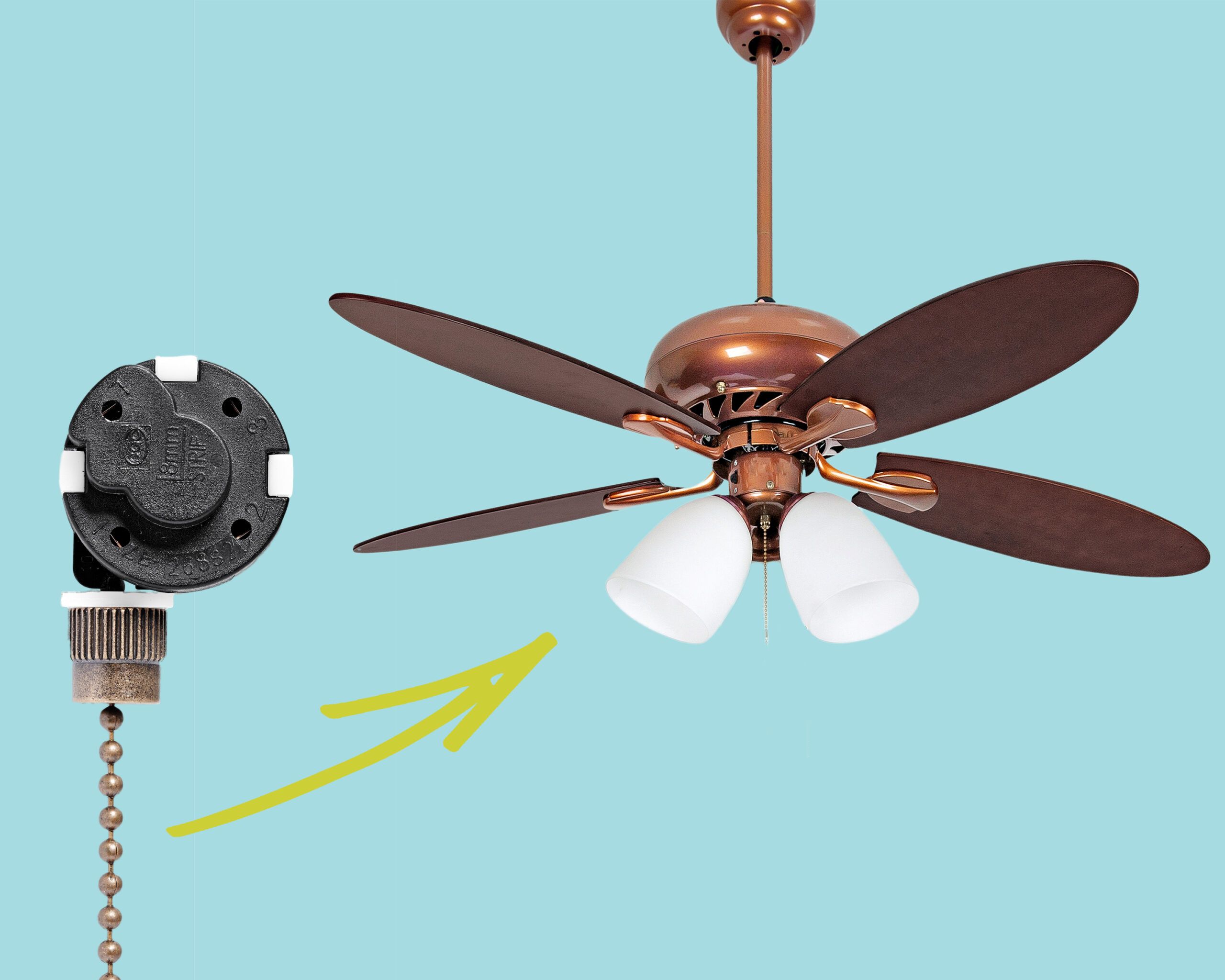
Too many yanks on a ceiling fan’s chain can break the flimsy plastic switch inside.
Add a new switch ($8; Amazon) by shutting off the power and removing the lower part of the fan housing, which usually supports the light fixture. Note and then disconnect the wiring and move the housing to a table. Connect the wires to the new switch to match the order of the old one, then reinstall the housing.
15. Broken Baluster
A missing baluster ruins the look of a staircase and can also be a hazard for children. The first step in replacing one is finding an exact match from the home center or a company that offers stair parts. Here’s how to make the repair.
- With a mini pry bar, remove the stair tread’s end cap, which holds the tenon on the bottom of the baluster in place.
- To trim the replacement to fit, measure the upstairs side of an existing baluster from the tread to the spot where it touches the underside of the handrail, then transfer that measurement to the new one.
- Find the angle of the railing with a T-bevel, and mark that angle on the new baluster, too. Use that line to calibrate the angle of your miter saw.
- Cut the part, slip the tenon into the mortise, and drive finish nails through the new baluster into the underside of the railing before replacing the tread’s end cap.
16. Sticking Door
Solid-wood doors are particularly susceptible to seasonal changes in humidity, but you don’t have to be a master carpenter to fine-tune one so it swings freely all year. Tightening the hinge screws might pull the door back into alignment.
If the door still sticks, remove it, take off the hinges, and use a chisel to make the mortises about 1⁄8 inch deeper. Remove the same amount of material from the same edge of the door with a hand plane. Add the hinges, prime and paint the newly exposed wood, and rehang the door.
17. Cracked Plaster Ceiling
A house settling or a leak on the floor above can crack a plaster ceiling. If you’re comfortable working on a ladder, this is an easy fix using Big Wally’s Plaster Magic kit, which includes a two-part adhesive that you pump through and behind the plaster around the crack, securing it to the lath.
Clamp the repair tight with screw-in washers for at least 24 hours. Remove the clamps and skim-coat the repair with joint compound.
Easy Home Exterior Fixes
Some exterior repairs–like asphalt resealing–are labor-intensive, though not technically challenging. The determined DIYer can tackle such tasks.
18. Bad Grill Burners
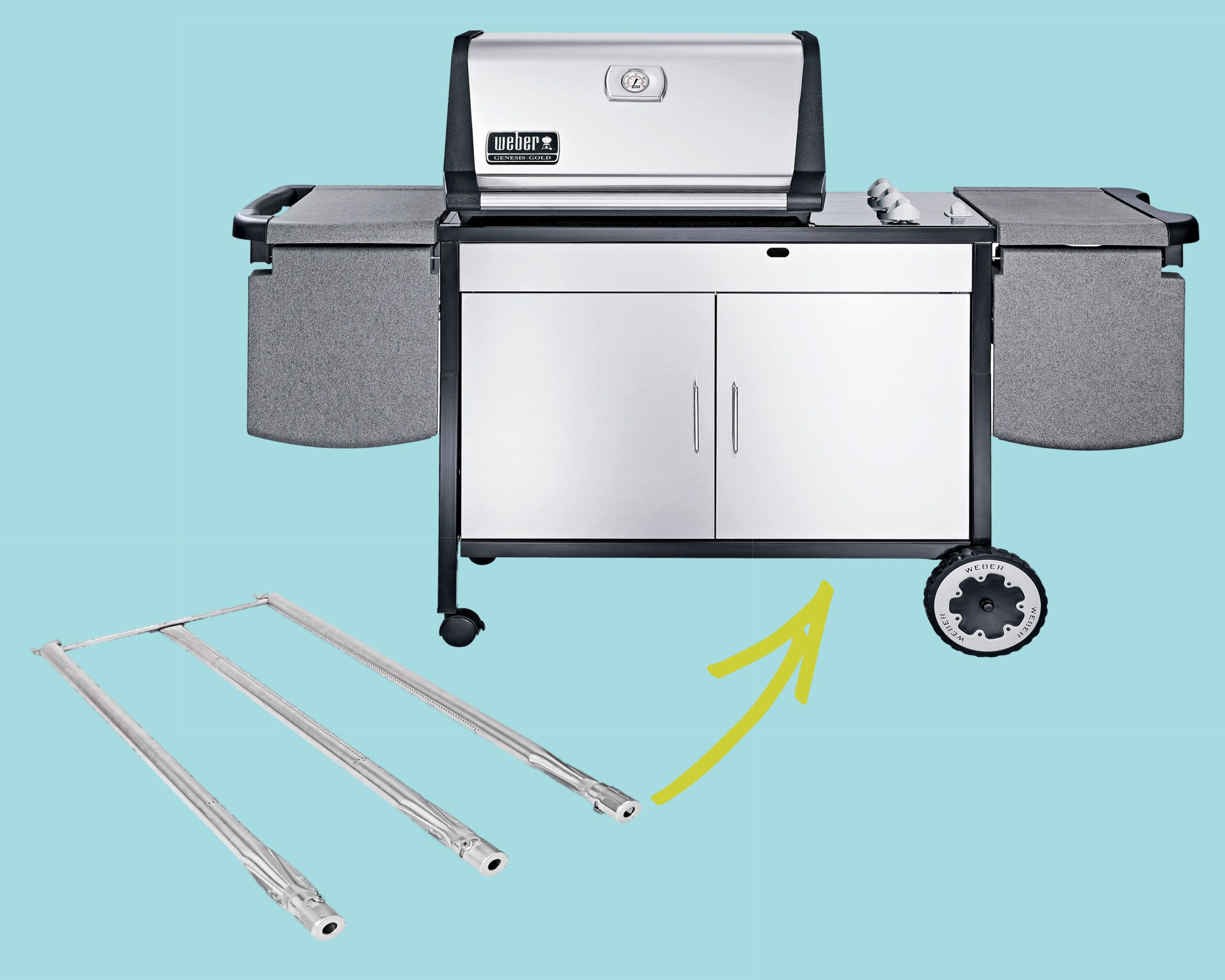
Grease, unburned food, or insects looking for a home can clog the tiny ports that line a gas grill’s burners. If your grill heats inconsistently, try cleaning the faulty burner with a wire brush, then turn it on. You should see an even blue flame from each port.
If the burner is still clogged, upgrade to a new one ($70; Home Depot) to fit your grill.
Remove the manifold controlling the gas flow and the burner itself in sections. Install the replacement parts in the reverse order.
19. Caved-In Asphalt
Asphalt settles over time, but serious driveway potholes that collect rain in spring and snow in winter should be repaired before they freeze and become larger. The fix is easy but labor-intensive.
- Square the damage with a water-cooled circular saw fitted with a diamond blade, then dig the hole down to the subsoil.
- Refill the hole with bagged paver base ($40; Amazon) in 2- to 4-inch-thick layers, tamping as you go, until you’re within 2 inches of finished grade.
- Top the base with a bag or two of blacktop repair (stone mixed with an asphalt binder); tamp that even with the rest of the driveway.
20. Trickling Spigot
An outdoor spigot that doesn’t thoroughly shut off is wasteful and may allow water to enter the basement. You can rebuild a compression-style faucet, the most common kind, without calling a plumber or ripping into interior walls. Here’s how:
- Shut off the water and remove the handle with wrenches.
- Replace the small rubber washer held in with a screw. Thread the handle back in and turn the water on.
- If it still drips, remove the handle again and stick a valve reseating tool, about $10 at the home center, into the faucet body; turn it a few times to mill a flat surface for the washer to rest against.
Easy Tool Fixes
Appliances aren’t the only items suitable for DIY repair. Try fixing your tools before ordering costly or wasteful replacements.
21. Crushed Hose Fitting
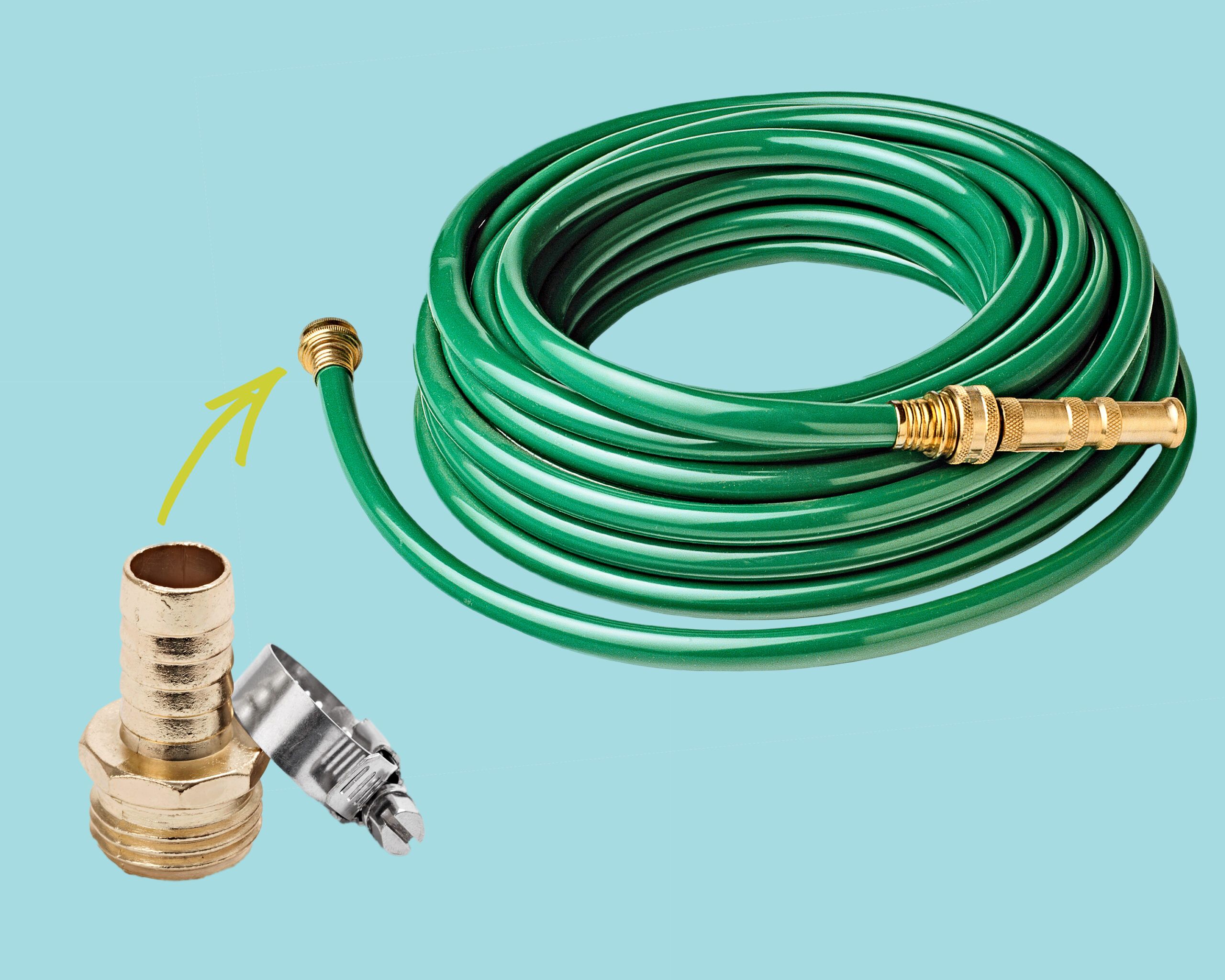
Hoses are most susceptible to damage at their ends, which also makes them easy to fix.
If you run over your hose with a car, cut the damaged end off with a utility knife. Twist the right-size male or female fitting—5/8 inch is the most common—onto the opening, then tighten with a stainless-steel band clamp.
22. Sluggish Power Tools
Older electric power tools transfer energy to the motor through chunks of carbon called brushes, which wear down over time. If a tool stops responding or is noticeably slow, spend about $15 on replacement brushes before tossing the tool.
- Unscrew the large plastic caps on the outside of the motor housing to release the spring-loaded brushes.
- Add new brushes from the manufacturer or file generic ones until they slide in freely, and reattach the caps.
- Plan to take the housing apart completely in older drills and circular saws that don’t have easily accessible brushes and take plenty of photos to help with reassembly.
23. Broken Wood Handles
Don’t buy a new rake, sledgehammer, or wheelbarrow just because its wood handle is broken. Home centers stock replacement handles; you can also check the House Handle Company, which specializes in hardwood handle parts.
- Use a hammer to knock the head and ferrule off the broken tool or drill out the head’s rivets.
- Add the new handle to the tool head; turn it so the straight grain faces up and drive the two parts together.
- To fix a split handle, mist the damage with water; add some expanding polyurethane glue to fill the void or wrap the damage with FiberFix tape ($12; Amazon). If you routinely break handles, consider upgrading to tougher fiberglass.
Where to Find Parts
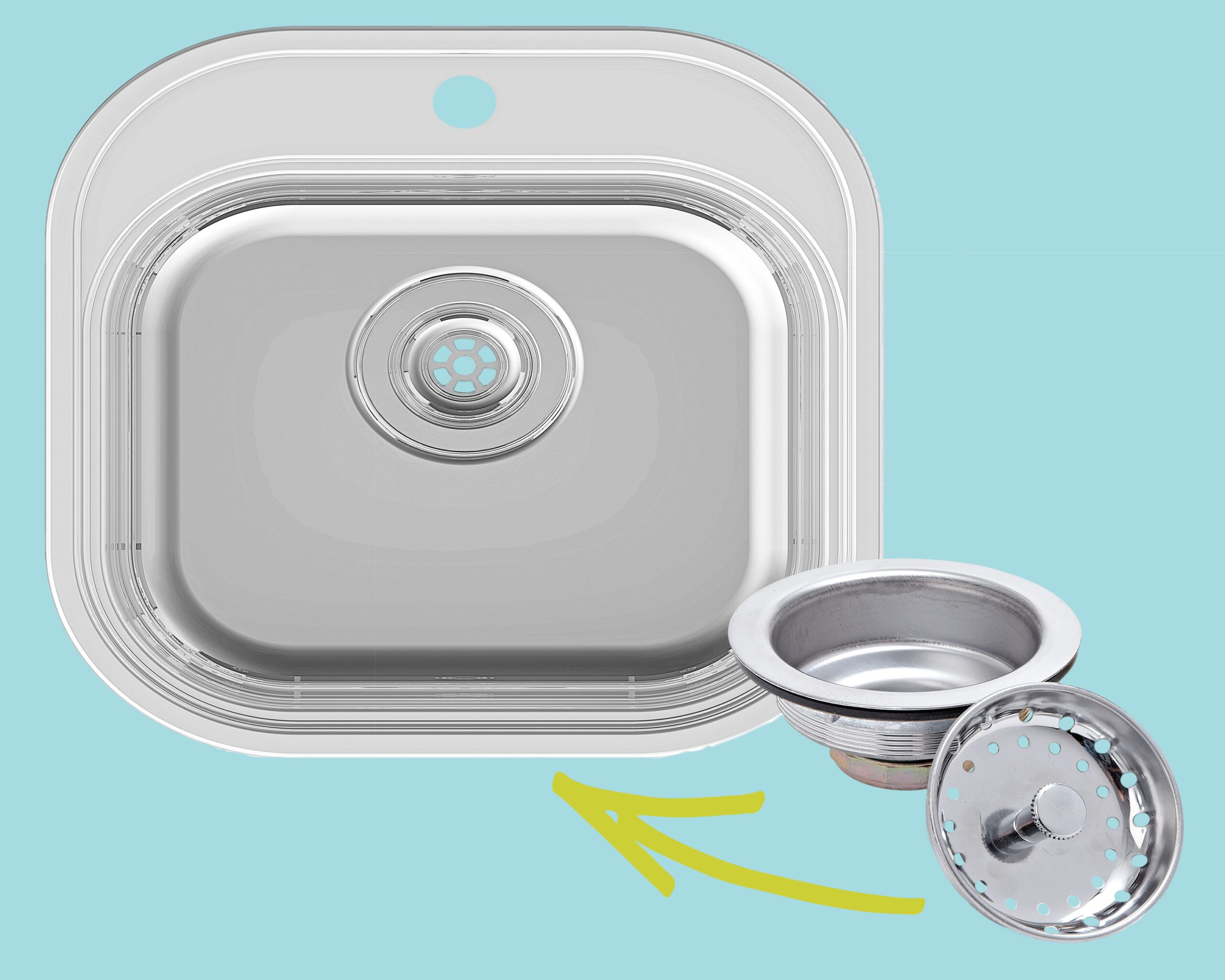
To order replacement parts for an appliance, you’ll need its serial and model numbers. Sites for manufacturers and retailers, like GE Appliances, RepairClinic, and Sears Parts Direct, stock parts to fit all the major brands. Remember: Before starting any fix, shut off the electricity, gas, or water to the unit.
What’s Not a DIY Fix
Try the repair first if the cost of the new parts is less than half of what you’d pay to replace the product with a new one. Cost aside, here are a few instances that break that rule.
- Microwave ovens that don’t heat: It’s too dangerous to replace the magnetron tube because of the high voltage stored.
- Pressure washers with weak flow: The pumps on $100 units are not designed to be repaired. But the axial cam or triplex pumps found on more expensive models can be replaced.
- Cracks on the furnace heat exchanger: If not properly sealed, these can leak carbon monoxide and other gases into the house. Call in a pro.
- Squeaky bearings on a front-load washer: This is one of the most mechanically involved repairs and warrants the cost of a service call.
- Refrigerators that don’t cool: Recharging the compressor that keeps food cold requires a torch and refrigerant gauges. Hire a pro, or recycle the appliance and spring for a new one.
